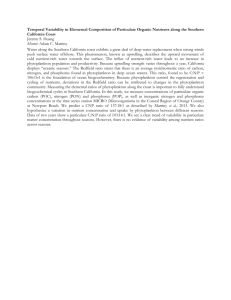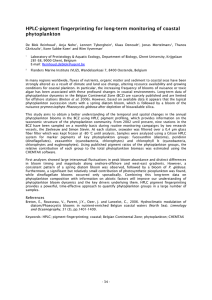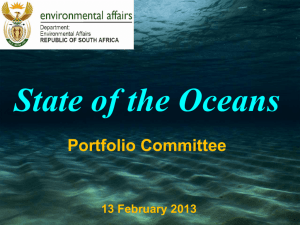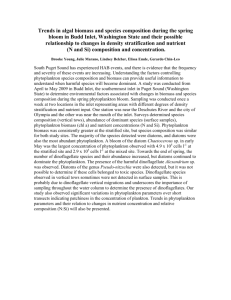10706_Gómez Ocampo
advertisement
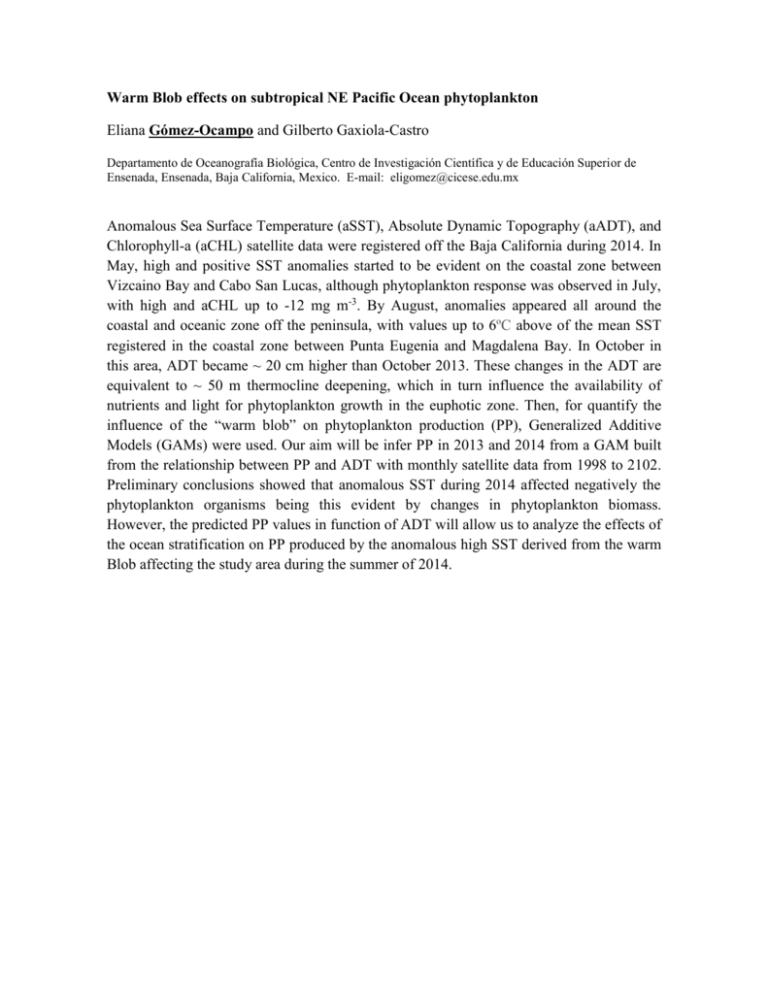
Warm Blob effects on subtropical NE Pacific Ocean phytoplankton Eliana Gómez-Ocampo and Gilberto Gaxiola-Castro Departamento de Oceanografía Biológica, Centro de Investigación Científica y de Educación Superior de Ensenada, Ensenada, Baja California, Mexico. E-mail: eligomez@cicese.edu.mx Anomalous Sea Surface Temperature (aSST), Absolute Dynamic Topography (aADT), and Chlorophyll-a (aCHL) satellite data were registered off the Baja California during 2014. In May, high and positive SST anomalies started to be evident on the coastal zone between Vizcaino Bay and Cabo San Lucas, although phytoplankton response was observed in July, with high and aCHL up to -12 mg m-3. By August, anomalies appeared all around the coastal and oceanic zone off the peninsula, with values up to 6ºC above of the mean SST registered in the coastal zone between Punta Eugenia and Magdalena Bay. In October in this area, ADT became ~ 20 cm higher than October 2013. These changes in the ADT are equivalent to ~ 50 m thermocline deepening, which in turn influence the availability of nutrients and light for phytoplankton growth in the euphotic zone. Then, for quantify the influence of the “warm blob” on phytoplankton production (PP), Generalized Additive Models (GAMs) were used. Our aim will be infer PP in 2013 and 2014 from a GAM built from the relationship between PP and ADT with monthly satellite data from 1998 to 2102. Preliminary conclusions showed that anomalous SST during 2014 affected negatively the phytoplankton organisms being this evident by changes in phytoplankton biomass. However, the predicted PP values in function of ADT will allow us to analyze the effects of the ocean stratification on PP produced by the anomalous high SST derived from the warm Blob affecting the study area during the summer of 2014.





